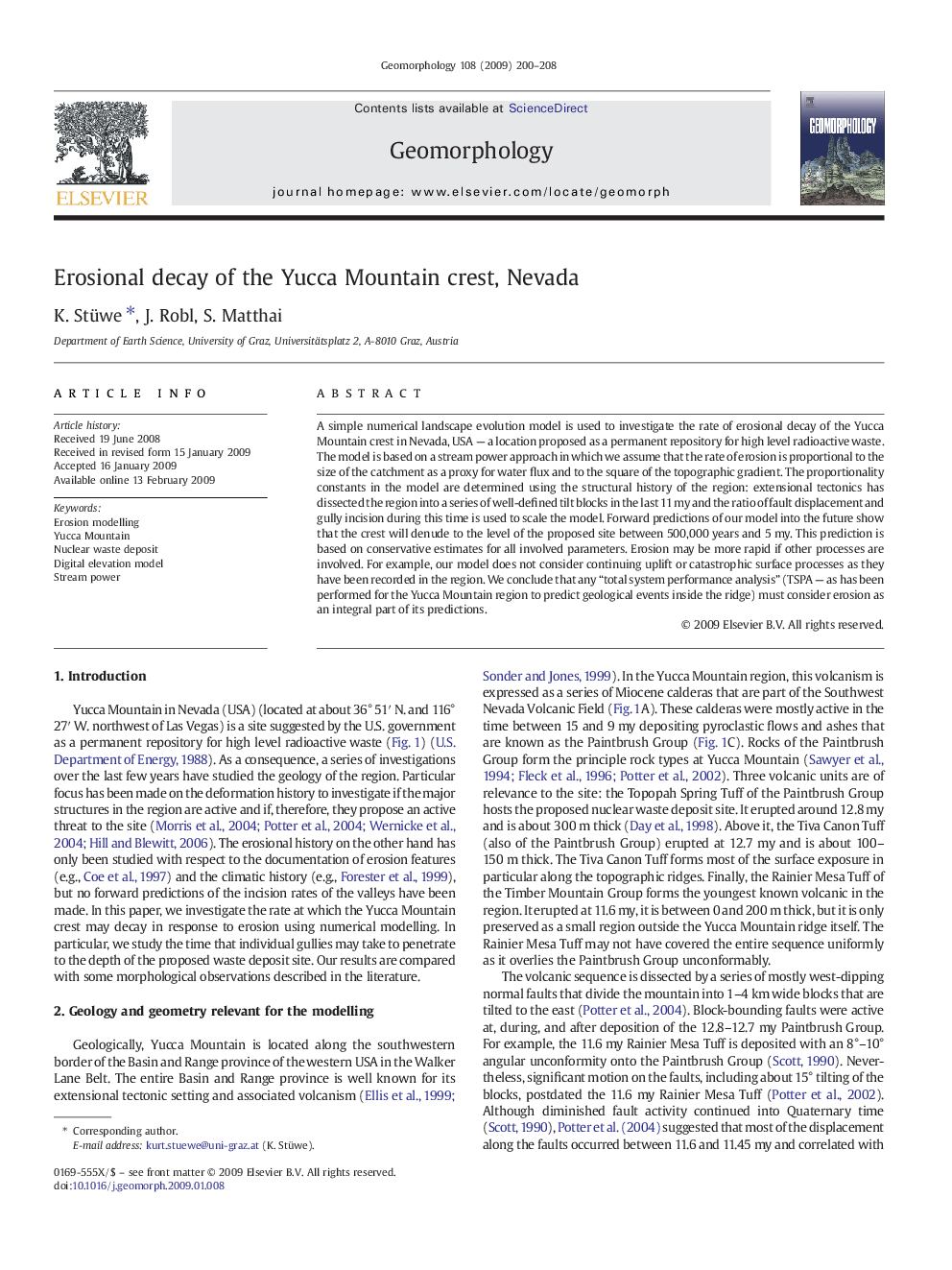| Article ID | Journal | Published Year | Pages | File Type |
|---|---|---|---|---|
| 4686379 | Geomorphology | 2009 | 9 Pages |
A simple numerical landscape evolution model is used to investigate the rate of erosional decay of the Yucca Mountain crest in Nevada, USA — a location proposed as a permanent repository for high level radioactive waste. The model is based on a stream power approach in which we assume that the rate of erosion is proportional to the size of the catchment as a proxy for water flux and to the square of the topographic gradient. The proportionality constants in the model are determined using the structural history of the region: extensional tectonics has dissected the region into a series of well-defined tilt blocks in the last 11 my and the ratio of fault displacement and gully incision during this time is used to scale the model. Forward predictions of our model into the future show that the crest will denude to the level of the proposed site between 500,000 years and 5 my. This prediction is based on conservative estimates for all involved parameters. Erosion may be more rapid if other processes are involved. For example, our model does not consider continuing uplift or catastrophic surface processes as they have been recorded in the region. We conclude that any “total system performance analysis” (TSPA — as has been performed for the Yucca Mountain region to predict geological events inside the ridge) must consider erosion as an integral part of its predictions.
